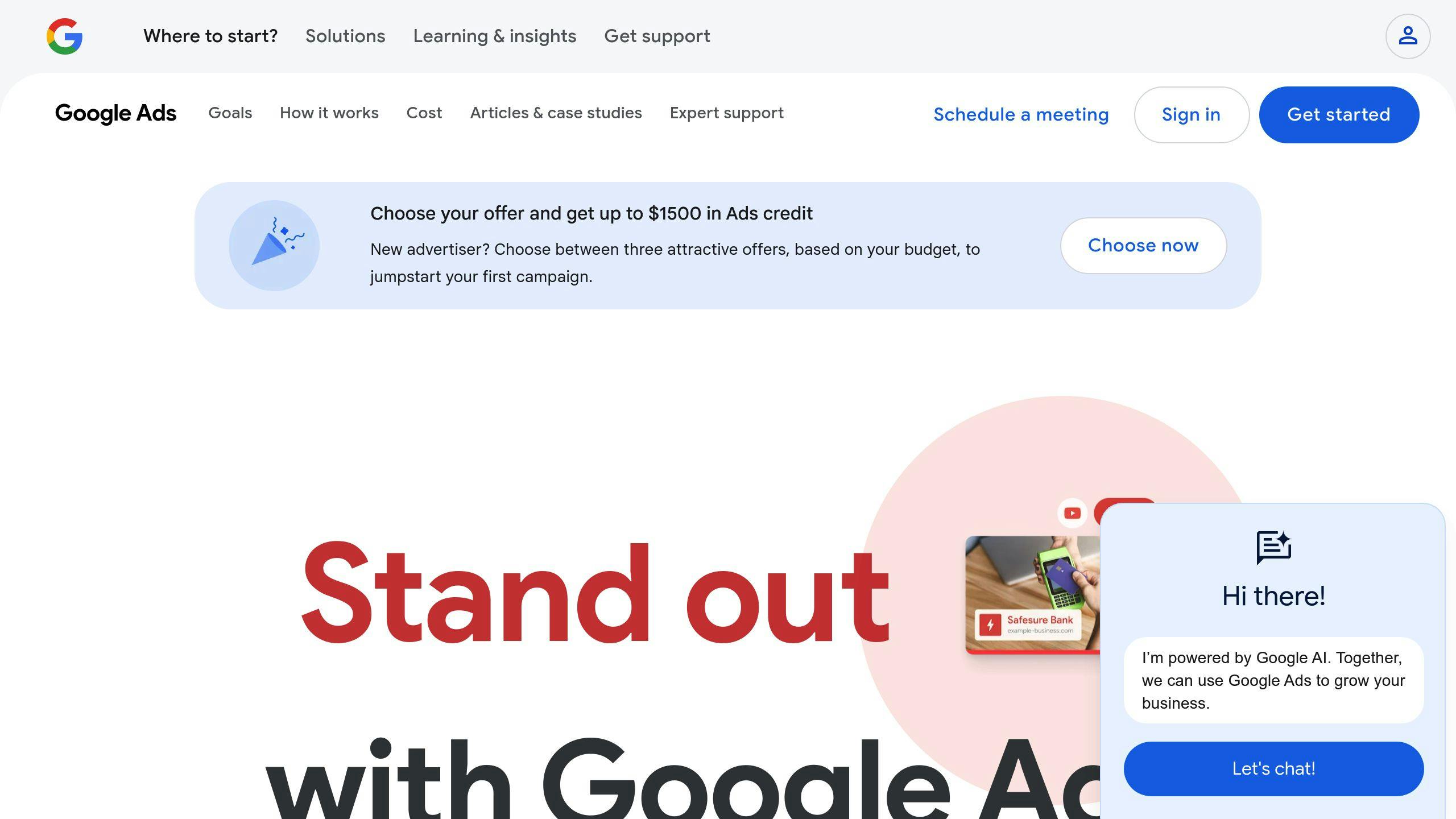- Business Types
Health and Wellness
Home Services
- Services
- Case Studies
- Blog
- Contact Us
BOOK A CALL
Running ads without proper targeting wastes money and misses potential customers. Here’s why it matters and how to fix it:
Focus on reaching the right audience to save your budget and boost results.

Poor targeting can quickly eat through your ad budget without delivering meaningful results. Let’s break down how ineffective targeting impacts your campaigns.
Casting too wide a net means spending money on people who are unlikely to take action. This is especially problematic in niche industries. Take healthcare, for example: targeting an entire city for a specialized service wastes resources when only certain demographics or neighborhoods are relevant. The fallout often includes:
Focusing only on demographics while overlooking behaviors and intent can derail your targeting. Knowing why someone is searching or engaging with content is just as important as knowing who they are.
"Without deep insights into behaviors and motivations, brands fail to connect with the right audience at the right time."
For example, a hotel that bases its ad targeting solely on age and income might miss out on travelers actively researching destinations or booking flights – key signals of intent.
Running ads on the wrong platforms or devices can hurt performance and inflate costs. Here’s how it plays out across industries:
| Industry | Impact |
|---|---|
| Home Services | Running desktop ads when most emergency searches happen on mobile |
| Healthcare | Relying on social media ads for urgent care services lowers conversions |
| Hospitality | Ignoring cross-device tracking misses steps in the booking process |
Using tools like Google Ads or Facebook Ads Manager can help align your targeting with how your audience behaves online. Fixing these common mistakes can lead to better ad performance and higher ROI. Up next, we’ll dive into strategies to fine-tune your targeting.
Tap into the customer data you already have at your fingertips. Your website analytics, CRM, and email marketing tools are treasure troves of information about your audience’s habits and preferences. This data is key to building accurate audience segments that improve your targeting.
For example, Google Analytics can highlight your most engaging pages, top-performing content, and primary conversion sources. Meanwhile, your CRM can uncover purchase trends and customer preferences that guide your strategy. Use these insights to build audience profiles based on real behavior, not assumptions.
Once you’ve reviewed your data, consider using it to re-engage past visitors or target new audiences with similar traits.
Retargeting campaigns are a smart way to connect with people who’ve already interacted with your brand. These campaigns often deliver higher ROI since you’re targeting users who are already familiar with your business.
For instance, you can focus on:
Lookalike audiences take it a step further by helping you find new potential customers who resemble your best existing ones. Platforms like Facebook and Google Ads analyze your audience data to identify users with similar characteristics, enabling you to expand your reach without sacrificing precision.
After setting up retargeting and lookalike campaigns, experimenting with different strategies can help fine-tune your results.
Testing is essential to figure out what works best for your campaigns. Experiment with different audience segments, ad formats, and messaging to see what drives better engagement and conversions.
Pay attention to metrics like conversions, click-through rates (CTR), and cost per acquisition (CPA) to gauge performance. Use tools like Google Analytics and ad platform analytics to track these numbers and make informed adjustments.
Blue Aspen Marketing emphasizes the importance of digging deeper into consumer insights – beyond just basic demographics. Understanding their attitudes, behaviors, and motivations can help you create more precise targeting strategies and reduce wasted ad spend.
Keep in mind that ad targeting isn’t a one-and-done effort. Regularly review your campaign data and tweak your approach based on performance. This ongoing optimization ensures your ad budget is spent wisely and delivers strong results.
Tracking the right metrics is key to evaluating how well your ad targeting is working. Here are the ones you should focus on:
Using the right tools can help you monitor and fine-tune your targeting efforts, ensuring your budget is spent wisely:
With marketing budgets growing by just 2.9%, it’s more important than ever to make every dollar count. Here’s how you can stretch your budget:
Bad data can cost businesses billions annually. To avoid this, make sure your tracking is accurate and your decisions are based on reliable information. Use trusted analytics tools to weed out suspicious activity that could distort your targeting insights.
Effective ad targeting requires a deep understanding of audience behavior, data analysis, and platform strategies. For many small and medium-sized businesses, teaming up with professionals like Blue Aspen Marketing can help fine-tune targeting efforts through data-backed methods and precise audience segmentation.
With expert advice and practical strategies, you can make sure every dollar in your ad budget delivers better results.
Wasting ad budgets often comes down to poor targeting, with many consumers ignoring ads that don’t feel relevant. Avoiding common mistakes – like targeting audiences that are too broad or choosing the wrong platforms – can help you spend smarter. Focus on these core strategies:
"Without granular consumer insight that goes beyond actions to map out attitudes, behaviors and motivations, brands will struggle to know their audience well enough to offer the experience they’ve come to expect, and be in front of the right eyes at crucial times." – GWI
The goal of ad targeting isn’t to reach as many people as possible – it’s to connect with the right audience. By applying these strategies and working with knowledgeable professionals when needed, you can cut down on wasted spending and see better results from your campaigns.